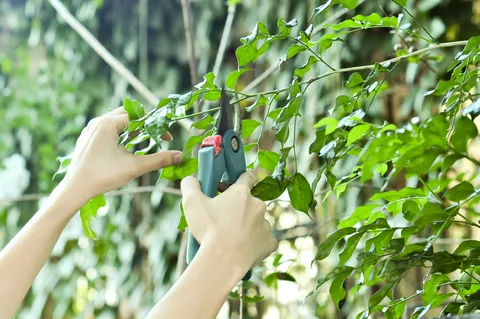Seasonal Tree Pruning and Maintenance – Essential Care for Healthy, Beautiful Trees
Essential Care for Healthy, Beautiful Trees

Trees are a valuable part of any property, adding natural beauty, shade, and environmental benefits. However, just like any living organism, trees need regular care to stay healthy and safe. One of the most effective ways to ensure their long-term health and growth is through seasonal tree pruning and maintenance.
This practice not only improves the appearance of trees but also prevents potential hazards, promotes strong growth, and extends their lifespan. In this article, we will explore the importance of seasonal pruning, the benefits of tree maintenance, the best times for pruning, and why professional care is the safest approach.
What Is Seasonal Tree Pruning?
Seasonal tree pruning involves the selective removal of branches at specific times of the year to improve the tree’s health, shape, and safety. Unlike random cutting, pruning is a strategic process designed to achieve particular goals:
-
Removing dead, diseased, or damaged branches
-
Encouraging healthy growth and structure
-
Shaping trees for aesthetics
-
Improving sunlight and air circulation
-
Preventing hazards from overgrown or weak limbs
Since trees respond differently to pruning depending on the season, timing plays a key role in the process.
The Importance of Regular Tree Maintenance
Tree maintenance goes beyond just pruning. It includes inspections, trimming, fertilization, pest management, and monitoring for diseases. Routine care ensures that trees remain safe, attractive, and strong enough to withstand storms and other environmental stresses.
Some key benefits of regular tree maintenance include:
-
Enhanced Tree Health – Detecting and addressing issues early prevents long-term damage.
-
Improved Safety – Weak or dead branches are removed before they become dangerous.
-
Better Aesthetics – Well-maintained trees improve curb appeal and property value.
-
Longevity – Proper care allows trees to thrive for decades.
-
Environmental Benefits – Healthy trees provide shade, reduce energy costs, and improve air quality.
Best Seasons for Tree Pruning
The timing of pruning is essential for maximizing benefits. Here’s a breakdown of the most effective seasons for pruning and maintenance:
1. Winter Pruning (Dormant Season)
-
Best time for most trees, as they are in a dormant state.
-
Encourages strong growth in the spring.
-
Easier to see tree structure without leaves.
-
Reduces risk of disease spread.
2. Spring Pruning
-
Ideal for removing dead branches left from winter damage.
-
Helps shape younger trees.
-
Should be done cautiously, as excessive pruning can stress trees during active growth.
3. Summer Pruning
-
Useful for controlling growth and removing defective branches.
-
Helps manage trees that grow too close to houses, power lines, or other structures.
-
Reduces excessive shade for better sunlight penetration.
4. Fall Pruning
-
Generally avoided for most trees, as pruning cuts heal slower during fall.
-
Can make trees more vulnerable to disease before winter.
-
Limited fall pruning is acceptable for removing hazardous branches.
Common Tree Maintenance Practices
In addition to pruning, seasonal tree maintenance includes several other important tasks:
-
Tree Health Inspections – Checking for pests, diseases, and structural weaknesses.
-
Mulching – Helps retain soil moisture and regulate temperature.
-
Fertilization – Provides essential nutrients for healthy growth.
-
Pest and Disease Management – Protects trees from harmful infestations.
-
Soil Aeration – Improves root development and oxygen availability.
Combining these practices with pruning creates a comprehensive tree care plan.
Why Professional Tree Care Matters
While some minor trimming may be manageable for homeowners, technical pruning and full-scale tree maintenance are best handled by professionals. Here’s why:
-
Expert Knowledge – Certified arborists understand tree biology and proper pruning techniques.
-
Safety Assurance – Professionals are trained to handle dangerous branches and tall trees safely.
-
Proper Tools & Equipment – Specialized saws, lifts, and rigging systems ensure precision.
-
Disease Management – Professionals can identify early signs of disease and treat them effectively.
-
Long-Term Results – Correct pruning ensures healthier trees and reduces the need for emergency removals.
Attempting DIY pruning without knowledge can lead to over-pruning, property damage, or injuries.
The Risks of Neglecting Tree Care
Ignoring seasonal pruning and maintenance can result in serious consequences, such as:
-
Safety Hazards – Weak or dead branches may fall unexpectedly.
-
Tree Decline – Overcrowded or diseased branches weaken the entire tree.
-
Property Damage – Uncontrolled growth may interfere with roofs, fences, and power lines.
-
Increased Costs – Emergency removals or repairs are far more expensive than routine care.
Preventive maintenance is always more cost-effective than dealing with emergencies later.
Tips for Homeowners
If you want to keep your trees in great condition, here are some simple tips:
-
Schedule annual inspections with a certified arborist.
-
Avoid topping trees, as it weakens their structure.
-
Apply mulch around tree bases but keep it away from the trunk.
-
Water young trees regularly during dry seasons.
-
Remove visible deadwood promptly.
These steps, combined with professional pruning, will ensure your trees remain healthy year-round.
Conclusion
Seasonal tree pruning and maintenance are vital for the health, safety, and beauty of your trees. By understanding the best times to prune and committing to regular care, you can prevent hazards, extend the life of your trees, and enhance your property’s landscape.
Whether it’s shaping young trees in spring, removing deadwood in winter, or controlling growth in summer, each season offers unique opportunities for care. Partnering with certified arborists ensures your trees receive the expert attention they need to thrive.
Read More Article https://theglobalnewz.com/




